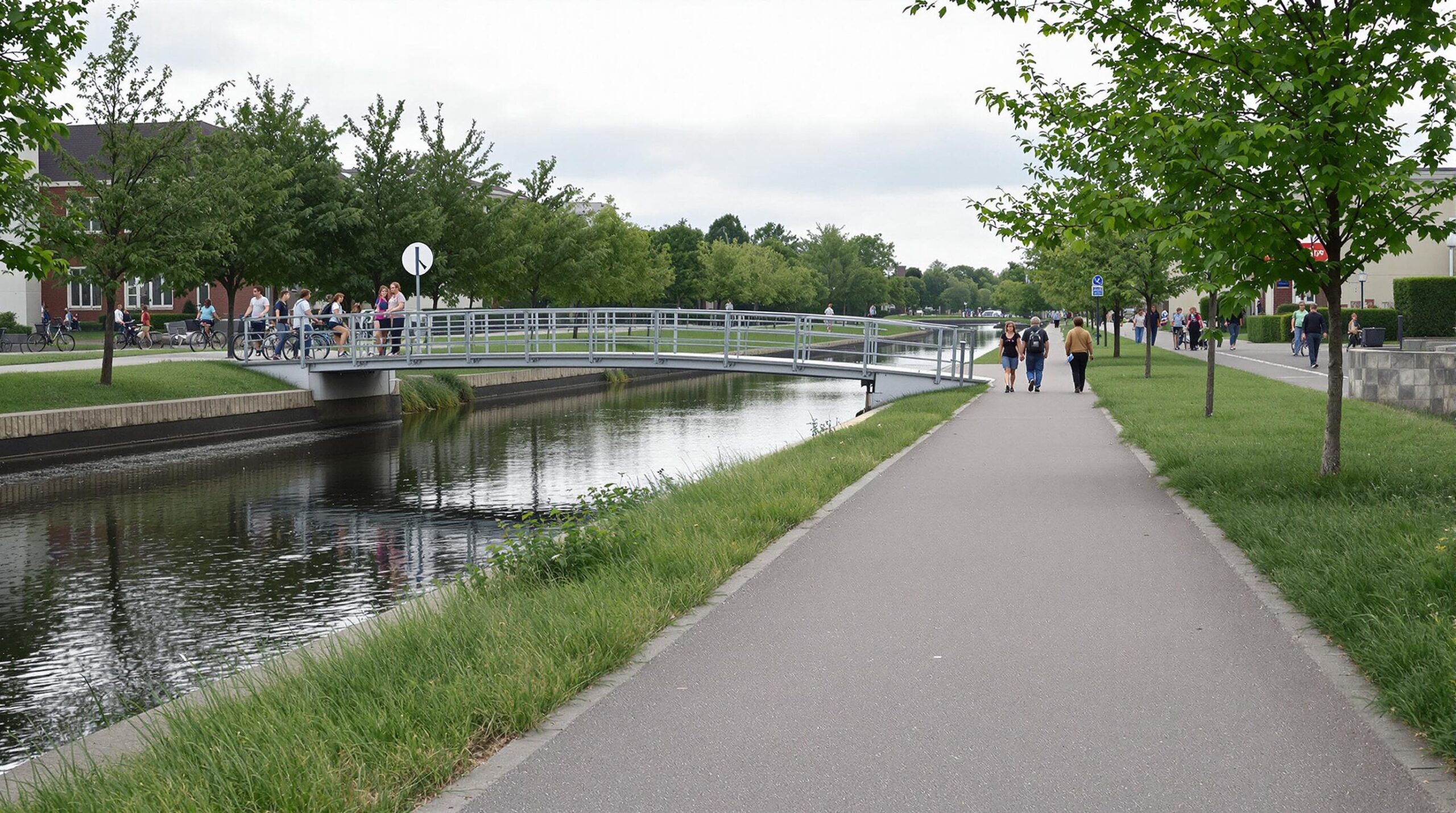The Village of Canajoharie in the Mohawk Valley and several communities in Cayuga County have been chosen to participate in a ten-month Empire State Trail Town program designed to expand visitation and boost local businesses through enhanced outdoor recreation opportunities. Their selection aligns with an effort to draw visitors who traverse New York’s 750-mile Empire State Trail, which offers both hiking and cycling routes through scenic landscapes and historically significant corridors.
According to the published account, the Cayuga County canal communities of Montezuma, Port Byron and Weedsport feature a 12-mile stretch of trail that can connect users to a range of attractions, including lodging, dining and heritage sites. Organizers of this program aim to sustain the area’s unique heritage while encouraging economic development and supporting the region’s diverse businesses.
“We are so pleased to receive this designation to promote our area especially during the bicentennial celebration of the building of the Erie Canal. This will be an exciting project that will unite the Cayuga County Canal Communities of Montezuma, Port Byron, and Weedsport in enhancing and highlighting our historical sites and amenities for bikers and hikers traveling along the Empire State Trail,” said Darrin Rooker of the Old Erie Canal Heritage Park at Port Byron. The Erie Canal, which officially opened in 1825, will mark its 200th anniversary in 2025.
“The Town of Brutus is thrilled to be included as part of the Cayuga County Canal Communities celebrating the 200th Anniversary of the Erie Canal. The uniqueness of each community will definitely make a big impact to all who visit the area. Together, we can highlight the past, present, future of the Erie Canal, and the beauty Cayuga County Canal Communities have to offer,” said James Hotaling, Town of Brutus supervisor.
Canajoharie has also focused on strategic planning to welcome visitors passing through. “Canajoharie is extremely excited to be selected for the 2025 Trail Town program. It’s a great opportunity for us to leverage our unique location on the trail to introduce a broader population to our beautiful and historic village and to further enrich the trail experience for all its users,” said Peter Lyden, deputy mayor of the Village of Canajoharie.
Program supporters note that ongoing improvements are vital to maximizing the trail’s effect on local economies. “We are always working to find ways to enhance the Empire State Trail and to further connect its adjacent communities so that everyone gets the most out of this incredible public asset, and that includes this year’s very deserving winners,” said Brian U. Stratton, director of the New York State Canal Corporation. He added, “I offer our sincere congratulations to Canajoharie, Clyde, and Cayuga County. The recognition and economic benefit that comes to the communities that participate in this invaluable program is tangible, and we’re excited to see good that is to come for these three localities.”
In a related statement, Paul Steely White, executive director of Parks & Trails New York, highlighted the trail’s broad appeal. “The Empire State Trail, recently ranked as the best rail trail in the country by Outside Magazine, is a massive economic driver for New York’s vibrant canalway communities, drawing visitors from around the country and the world,” he said. White also noted, “We look forward to working with the selected communities to help leverage this exceptional trail by improving trail-to-town connectivity, enhancing the services and amenities that trail users seek, and promoting a culture of stewardship, hospitality, and inclusivity.”
As reported by the news coverage, canal-related tourism plays a major role in local economies, with an estimated 4 million visits annually and revenue in the hundreds of millions of dollars. A 2014 economic impact study cited $250 million in yearly contributions from the Erie Canalway Trail, a figure that municipalities hope to build upon by attracting more overnight travelers.
Heritage preservation remains a guiding principle, and these communities are working to safeguard elements such as an operational lock at the Erie Canal Heritage Park and remains of the Richmond Aqueduct. Meanwhile, infrastructure upgrades like rest stops and local footpaths are designed to meet modern visitor needs. Collaboration between public and private sectors can help build stronger town connections to the Empire State Trail.
Sustainability practices can enhance visitor experiences while also protecting local environments. Integrating solar-powered lighting near communal areas, using energy-efficient water systems, placing recycling and compost bins, and planting native vegetation in gathering areas can help reduce operating costs and appeal to travelers who prioritize responsible outdoor experiences.
Local attractions can benefit from digital tools that help visitors plan and explore. By featuring QR code-based trail maps, easy booking platforms, and timely activity updates, businesses can spotlight offerings such as brewpubs or farm-to-table options along the route. Contactless check-in at campsites or hospitality venues can further streamline operations and cater to modern preferences, although these features are not officially announced by the Empire State Trail program.
Organizers of the Empire State Trail Town program encourage travelers to discover lodging options in these welcoming areas. Individuals involved in the effort believe that more visits and overnight stays will bolster small businesses, invite travelers to immerse themselves in canal history and promote sustainable growth that preserves the essence of each location. Providing EV charging stations at RV properties can also cater to a growing market of environmentally conscious visitors, further aligning with the region’s commitment to a balance between economic opportunity and environmental stewardship.


